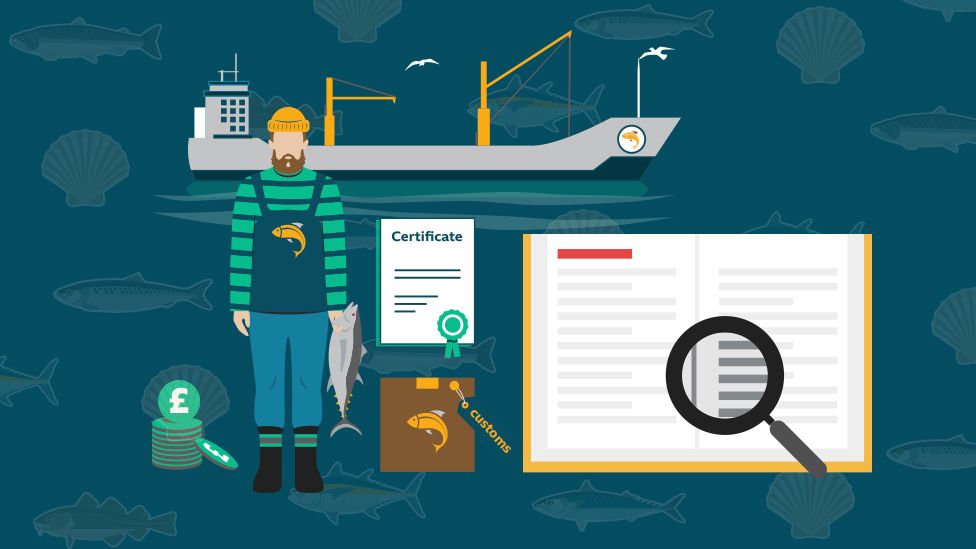
"It's slow, it's outdated, it's challenging in a number of ways we never expected," says Charlie Samways.
His grandfather founded Dorset-based fish merchant Samways 60 years ago, selling fish from a wooden barrow.
Today, with Charlie as sales director, the firm promises to get its fish and seafood "from port to plate" in 24 hours.
But extensive paperwork, rising costs and border delays following the end of the Brexit transition period have put that pledge under threat.

Samways buys seafood from 150 local fishermen who operate in Lyme Bay.
Its most popular products are Dover sole, lemon sole, cuttlefish and plaice - about 90% of which is exported to France, Spain, the Netherlands and Italy on its fleet of lorries.
This Monday, Mr Samways is overseeing the shipment of several tonnes of these fish, as well as scallops and seabass, to the EU on one truck.
Before the end of the Brexit transition period, the process was simple, he says. Each shipment needed a delivery note, made up of just one or two forms and invoices.
But the UK is now outside the EU - and its customs union and single market - so exporters face a very different set of requirements.
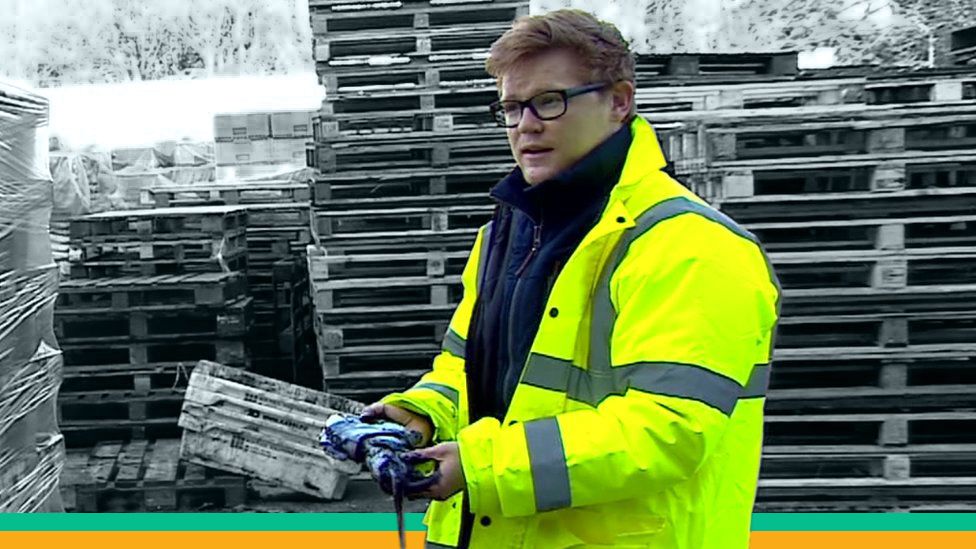
To begin with, British exporters need an ID number (called an EORI number). They must also make sure the fishermen they work with have a licence to sell sea fish and register their own premises as an "approved establishment" to do business with the EU.
The firm had taken these steps ahead of time and felt "ready to go on day one" when the new trade rules came in, Mr Samways says. But the day-to-day reality is different.

08:00
Two employees out of eight in the Samways office now focus on Brexit-related administration.
Chris Sheath and Katie Smith start filling out the new necessary forms for the lorry at 08:00. For each shipment, they must fill out and submit a catch certificate, which proves that the fish was caught legally.
That involves manually entering on a government website 149 different lines of data that was not previously required, such as the name of the vessel that caught the fish and the type of species being exported. The certificate for this shipment is 27 pages long.


They also have to get an export health certificate for each consignment to prove that the fish meet EU health standards. Information on the products, such as species and the weight of the fish, is uploaded and sent to an approved vet, who has to inspect the goods on-site later.
Mr Samways is considering recruiting a new employee to tackle the extra forms, which take until 13:00 to complete. That would cost the firm £30,000-£40,000 per year.
"We are a family business and you get used to the fact that you do long hours. But Brexit means we have to put an unholy amount of pressure onto every member of the team."
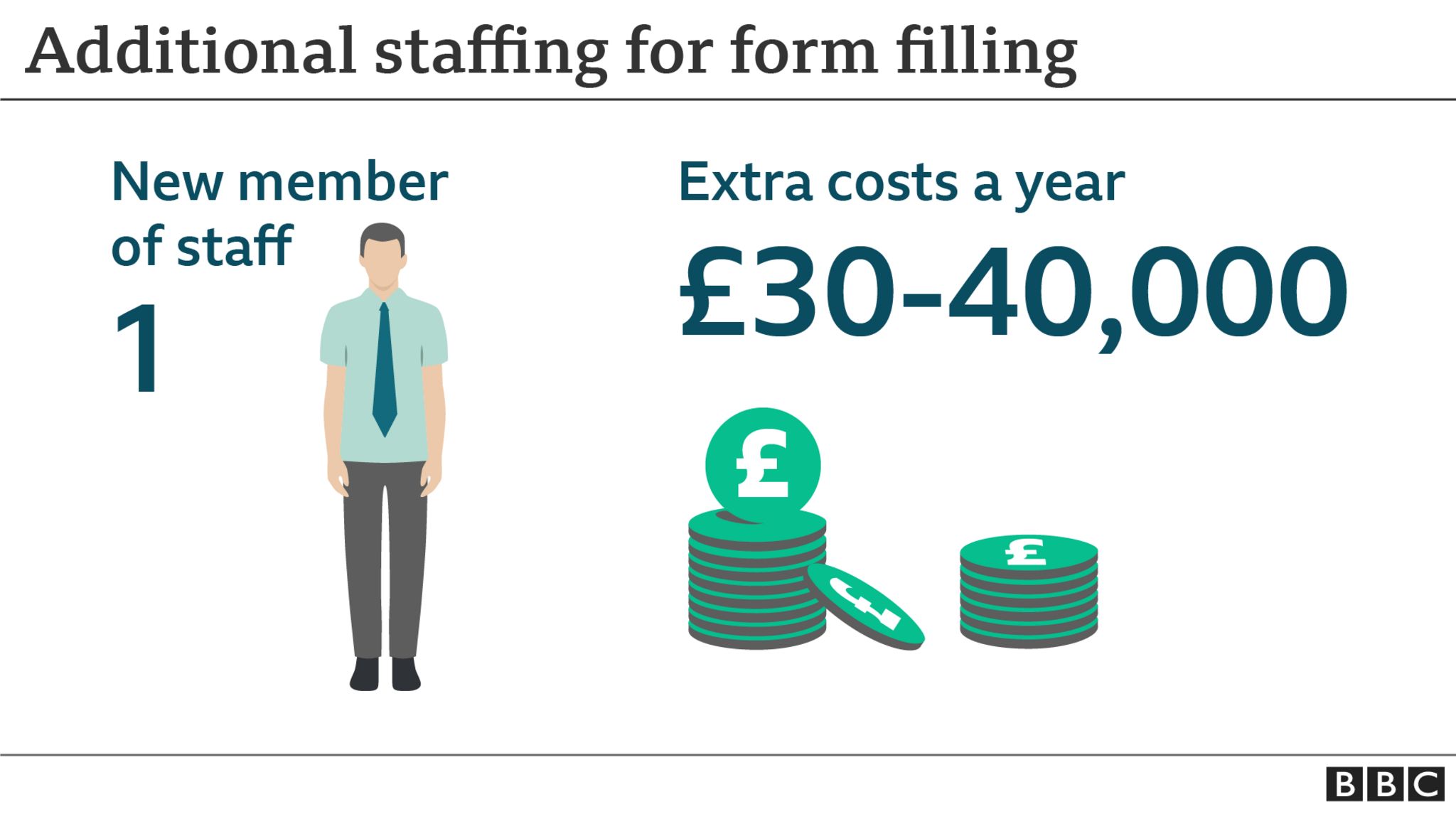
Throughout the morning, Chris and Katie are also talking to a customs agent that Samways has hired.
The customs agent handles the new paperwork requirements on the import side, and produces a "statement of value", which is two pages. Samways pays them roughly £200 per shipment to do this, which will work out to about £51,000 this year.
They input similar information on the fish and upload the catch certificate to an EU system (Traces NT). They also notify French authorities that animal products will soon be arriving at a border control post, which must be done at least one working day in advance.
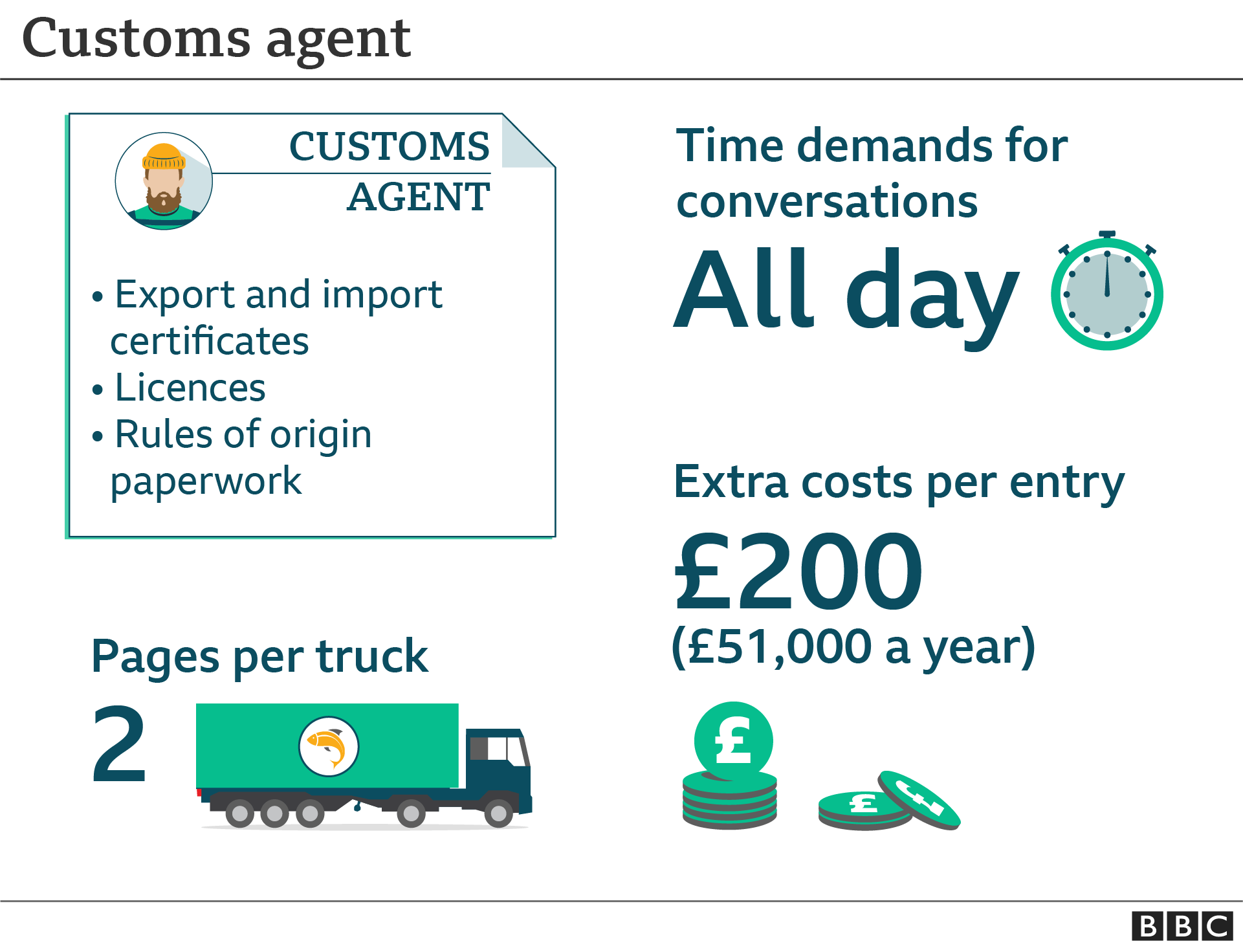

14:00
At 14:00, a vet from Sherbourne arrives to inspect the fish. They sign, stamp and number each page of an export health certificate, which for this truck is 20 pages long, after checking the products.
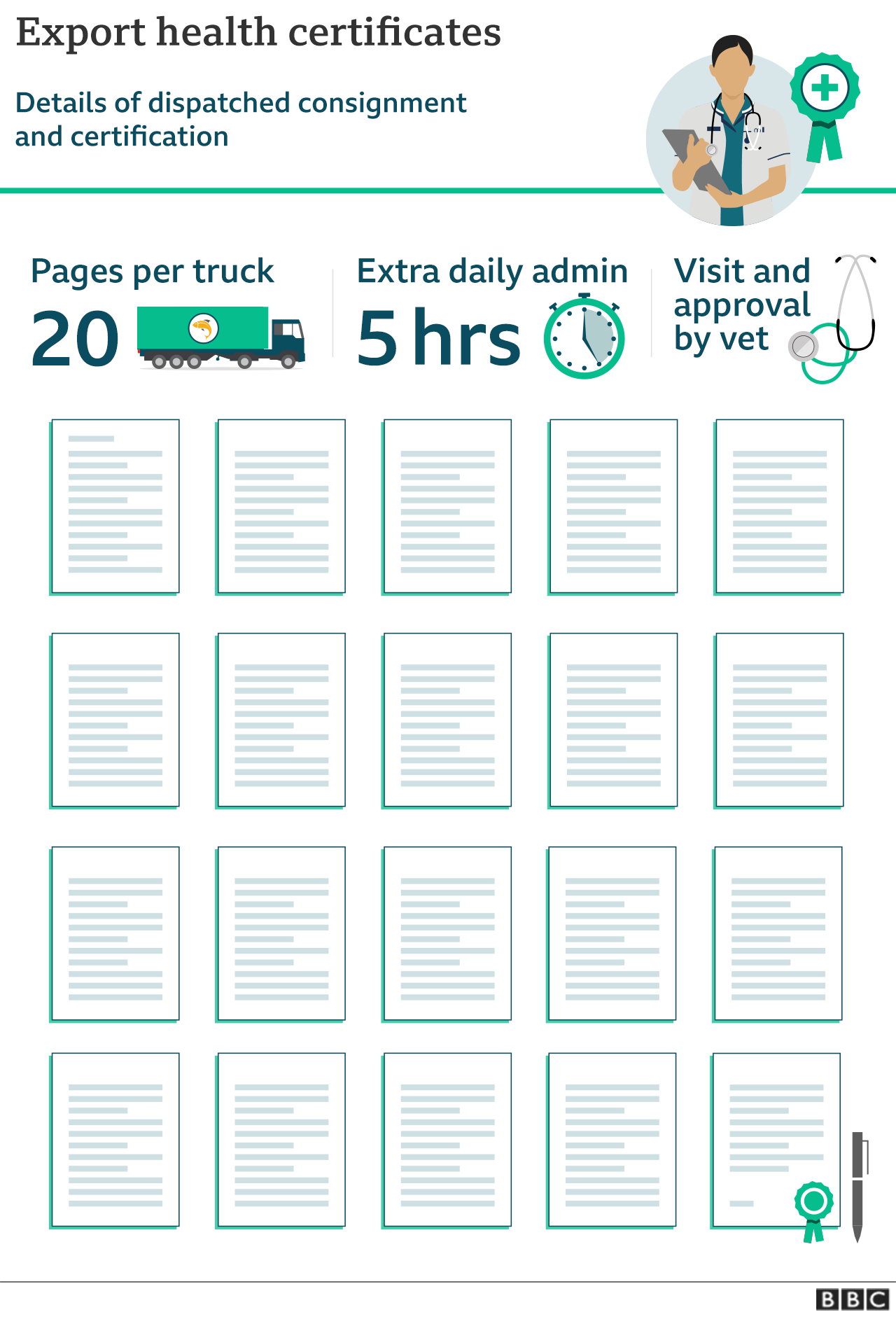

Once the vet has watched the truck being loaded and sealed, there are a few final hurdles before the driver can set off.
The agent must upload all of the signed-off documents to a UK government system to obtain a customs barcode, which takes about an hour to arrive and is printed out.
It is bundled together as part of an "export pack" for the shipment, which includes the catch certificates, export health certificates (in English and French), the statement of value and 22 invoices to show at the checkpoint.
For this one truck it totals 71 pages.


At this point, the driver gets ready to go - provided they have a Kent Access Permit, which confirms they have the correct documents for EU import controls before they enter Kent. Each one lasts 24 hours and they need a new one each time they travel to the EU via the Port of Dover.
Due to the pandemic, they also need proof of a negative Covid test taken in the last 72 hours.

17:00
The driver sets off from the depot in Bridport at 17:00 on his way to Dover. Seven or eight 44-tonne Samways' trucks make the same journey each week.
At the ferry port, the driver must show the customs barcode that was printed off. No barcode and they may face a fine and severe delays.
22:00
After the 22:00 ferry crossing through to Dunkirk in France, the driver heads to the border control post. French customs officials there inspect the fish and all of the paperwork.
Samways has faced major hold-ups at the French border, with lorries stuck for six or seven hours at a time while forms are examined. The firm's transport manager has had to take urgent phone calls in the middle of the night with updates.
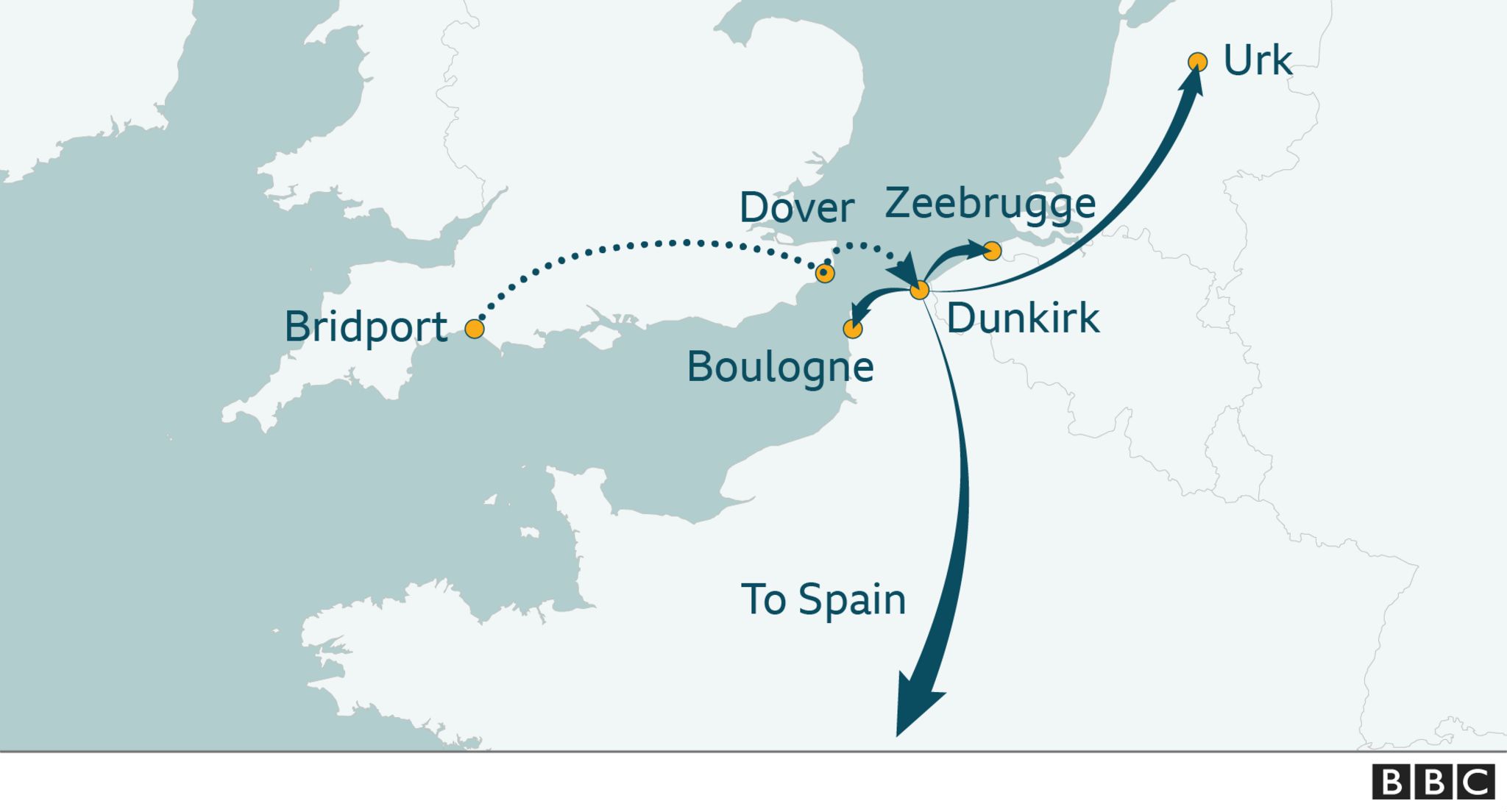
A small mistake, or an omission, on one form can also mean a consignment is held. But Mr Samways says their customs agent gets little feedback as to what, if anything, is wrong with the papers.
Once any problems are resolved, the French authorities update EU systems with the outcome of the inspection.
The fish are approved for release, the driver continues to their destination. Samways' plaice, scallops and sea bass will reach European dinner plates on Wednesday evening - 24 hours longer than was typical before the end of the Brexit transition period.
Mr Samways says he initially felt "extremely prepared" for Brexit, but was surprised by the "excessive" amount of paperwork required.
The government says that it is aware of a "small number of issues" since 1 January and that the recent announcement of a £23m fund for fishing firms should help those "experiencing export delays".
But Mr Samways dismisses the suggestion that these are just teething problems.
He has concerns that delays and extra costs could mean UK fishermen will take their catch directly to ports on the Continent, cutting out exporters like him.
"That's something we cannot afford."


Has your business been affected by changes following the end of the Brexit transition period? If so, you can share your experiences by emailing: haveyoursay@bbc.co.uk.
Please include a contact number if you are willing to speak to a BBC journalist. You can also get in touch in the following ways:
- WhatsApp: +44 7756 165803
- Tweet: @BBC_HaveYourSay
- Or fill out the form below
- Please read our terms & conditions and privacy policy
If you are reading this page and can't see the form you will need to visit the mobile version of the BBC website to submit your question or comment or you can email us at HaveYourSay@bbc.co.uk. Please include your name, age and location with any submission.
"fish" - Google News
February 05, 2021 at 07:56AM
https://ift.tt/2LjZDSA
Brexit: 71 pages of paperwork for 1 lorry of fish - BBC News
"fish" - Google News
https://ift.tt/35JkYuc
https://ift.tt/3feFffJ
Bagikan Berita Ini















0 Response to "Brexit: 71 pages of paperwork for 1 lorry of fish - BBC News"
Post a Comment